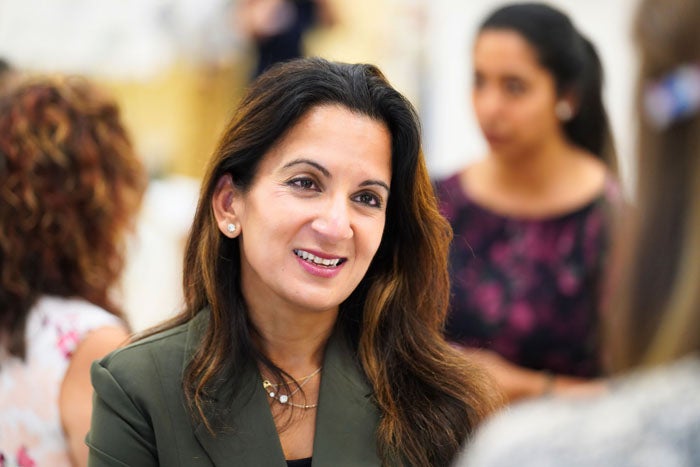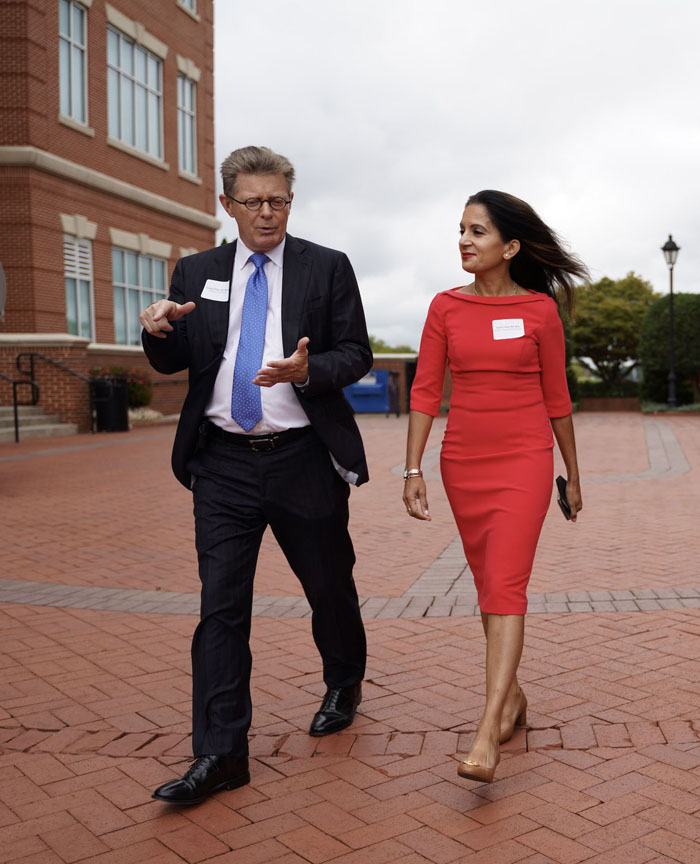Duke Kannapolis director outlines future at NC Research Campus
Published 12:00 am Sunday, October 9, 2022
Duke CTSI
KANNAPOLIS — Dr. Svati H. Shah has spoken to partners at the North Carolina Research Campus (NCRC) about her vision for the future of Duke Kannapolis at the 350-acre translational science hub focused on human health and nutrition.
The Duke University School of Medicine has created in Duke Kannapolis a full-service research site that manages a wide variety of clinical and translational research projects to inform a deeper understanding of health and disease and to accelerate population health research.
“This is Duke’s investment in the NCRC,” Shah said recently at the campus. “We embrace the mission of this unique scientific community working together collaboratively to empower human health through research, and we are extremely proud to be one of eight universities on the campus.”
Her talk marked the first time that Shah has presented to NCRC partners since being named to direct Duke Kannapolis.
Shah spoke about the history and capacity-building of Duke Kannapolis, part of the Duke Clinical and Translational Science Institute (CTSI). Founded in 2007 by Robert Califf, now commissioner of the U.S. Food and Drug Administration, Duke Kannapolis has reached 22,339 total enrollments by 13,886 unique participants — and counting.
“Our community of engaged research participants are our most valuable asset, with many enrolling in multiple research projects,” Shah said.
New Projects and Collaborations
Built on the foundational MURDOCK Study and Project Baseline Health Study, Duke Kannapolis has 58 funded research projects with 110 Duke faculty, as well as dozens of collaborations with investigators and institutions outside of Duke. Current areas of work include COVID-19, pain, mental health, smoking cessation, type 2 diabetes, cardiovascular disease, aging, chronic kidney disease, and more.
Shah welcomed new projects and collaborations with NCRC partners and encouraged attendees to explore the MURDOCK Study storefronts, which summarize data and samples at a glance for populations of interest. Duke Kannapolis has also streamlined access to biospecimens with a new biorepository transformation initiative, she said.
“We measure collaboration by relationships, and every project is an opportunity to strengthen these relationships through research,” Shah said.
Duke Kannapolis has developed a high level of community engagement by utilizing community advisory boards, marketing and communications, bilingual staff, events, and community partners including civic, church, and health organizations. Noting proven strategies for recruitment, retention, and engagement across diverse participant populations, Shah also attributed the success of Duke Kannapolis community engagement to bidirectional communication and 15 years of building trust with residents.
“We see participants as partners, and we prioritize personal connections with the community and open information flow to and from participants,” she said.
Vision for the Future
Shah thanked NCRC partners for welcoming Duke University President Vincent Price recently during his first visit to the campus. Key takeaways from in-depth discussions with Price included the importance of success through collaboration and shared goals, as well as the need to address disparities impacting research, healthcare, workforce development, and more.
Shah defined her vision for the future of Duke Kannapolis as harnessing innovations in contemporary precision medicine integrated with implementation science, education, and clinical infrastructure to accelerate discovery and transform patient care.
“Ultimately, we want more precise diagnosis, prognosis, and therapeutic decision-making for the individual person,” Shah said. “And we are thrilled to work with this collaborative, interdisciplinary scientific community toward that end.”





